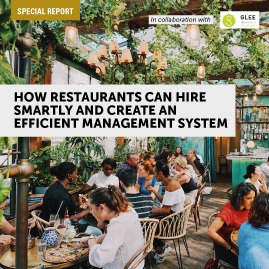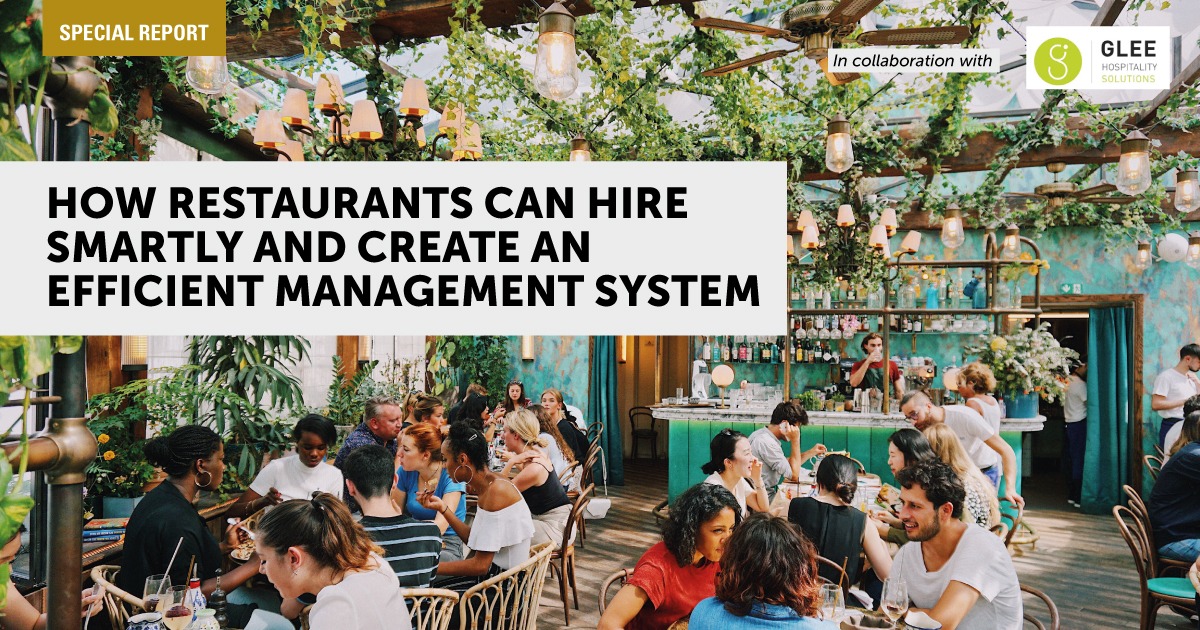The restaurant industry is notorious for its high employee attrition rates, and thus requires an efficient management system. Abdul Kader Saadi, managing director and owner of Glee Hospitality Solutions, takes a look at how these businesses can attract, hire and retain the right personnel.


There’s a popular expression where a chain is only as strong as it’s weakest link. When it comes to restaurant chains, it is often challenging to find and retain good staff in an industry that has one of the highest employee attrition rates in the market.
To combat these challenges there are several management systems and practices which can not only lead to a better hiring process but also increase work productivity and efficiency at every level of the employee’s life cycle.
As with any effective management system, these factors for improvement need to be implemented in every facet of the system to be effective. Due to the aforementioned high attrition rates, having an effective management system for hiring is not only essential but also imperative to ensure a high quality stream of employees is maintained.
The first pivotal step is to ensure that you have a detailed job description and that your communication/expectations of the role are crystal clear. This will ensure that your candidates are the ideal fit for the role and are less likely to suffer from job mismanagement down the line. To supplement this, it is also vital to do thorough background checks and attain references before hiring any new potential candidates. This obviously allows restaurants to attain an additional amount of security and gauge through tried-and-tested reference points on the ‘’real world’’ ability and work ethic of the candidate. Once vetted and cleared to the interview process, always opt for a face-to-face interview wherever possible, as this allows a certain level of human interaction and a better medium to measure responses to work-related questions. It is also the best way to assess the candidate’s character/personality.
The ideal scenario is to have a trial period before hiring. In the end, there is no real substitute for live results via trials to see whether a candidate is the right fit for your organization. If a candidate has successfully passed the interview and trial process, it is then essential that they go through an induction. This allows them to embrace the culture and structure of the establishment, cementing their sense of belonging and purpose in the overall environment. This initial phase can be regarded as the initial hiring phase, and the follow-up stage requires restaurants to ensure their employees are well managed in the day-to-day efficiency retention phase. In other words, restaurants should hold regular staff reviews to ensure their employees are maintaining efficiency levels and that job satisfaction and morale remain consistent. Staff incentives should also be integrated for better staff retention and motivation.
To avoid stagnation, there should be ongoing training to foster career growth with in-house promotions wherever possible. This creates an environment where improvement is rewarded and a focus on long-term skill attainment and personal growth, which in turn creates greater job satisfaction. To further supplement this, management should also keep an eye open to identify individuals with special talents who are ideal candidates for management training. Investing in staff with potential is an investment for the entire restaurant, which could pay dividends in the future, and additional resources such as external training should be utilized if possible.
As with the aforementioned initial phase, it is imperative to have open and clear lines of communication. This serves two purposes: the first being that it reduces feelings of alienation among the staff, and the second allowing higher management to get “real” feedback on the day-to-day challenges faced by staff to help decision-making.
From a technology perspective, we are fortunate to live in an age where state-of-the-art HR tools and software are available to better streamline and track vital HR employee data and feedback.
Ultimately the process of HR and education is a continuous process of evaluating, training and retraining staff. Unlike standard machinery, employees are living, breathing humans with emotions and unique requirements. To foster an environment of growth, it is important that their focus is grounded into better improving their skills set and growing within and alongside the restaurant as a whole. Employees are an investment, and those who are better trained become more valuable to the restaurant as a whole.

Abdul Kader Saadi,
Managing Director and owner
Glee Hospitality Solutions













